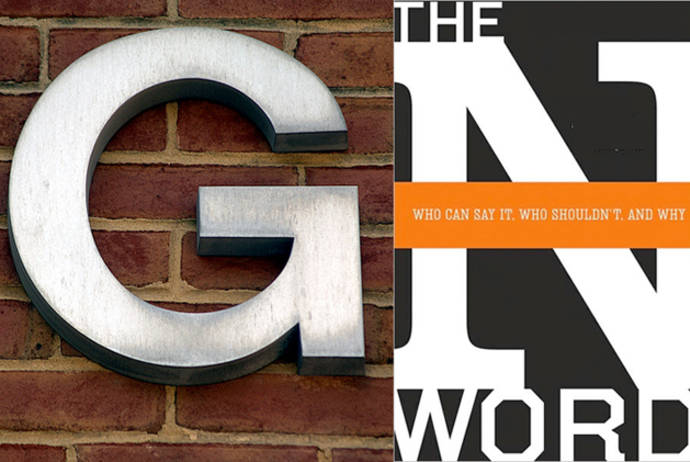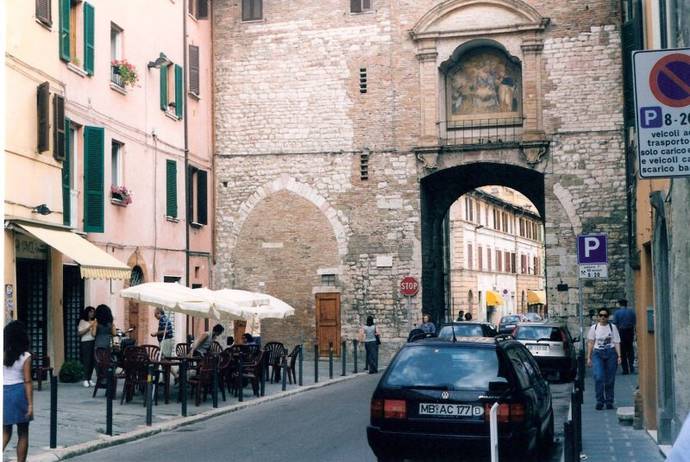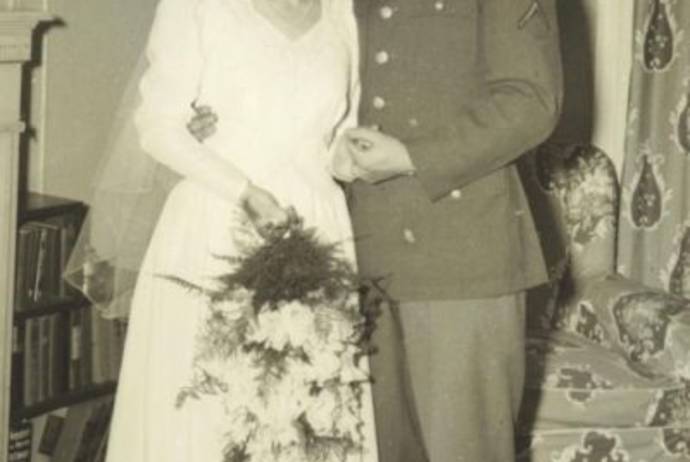It is with great reluctance and intense trepidation that I enter into the, excuse the term – “passionate” – debate, or rather heated argument, about whether either ordinary people, such as myself, or professors, such as myself, have the God (G-d, Allah)-given, or United States Constitution-given right to use all words when I talk about, the discourse-defined world in which I currently reside. So here goes: “Guinea, Dago, WOP, Greaseball, Ginzo, Guido, Italian-American, American of Italian Descent, Italo-American, and Italian/American,” are all verbal expressions of varying degrees of insult/pride, that have been used to stand for those people who it can be claimed, or who claim themselves, a cultural/genetic heritage that is traceable to, more or less, the real or imagined boundaries of a place called “Italy.” To equivocate, but only somewhat: “Nigger, Negro, Colored, African American, Afro-American, Black, and Person of Color,” are all verbal expressions of varying degrees of insult/pride, that have been used to stand for those people who it can be claimed, or who claim themselves, a cultural/genetic heritage that is traceable to, more or less, the real or imagined boundaries of a place called “Africa.”
When I was a child growing up in the yet (1940s and 50s) majority peopled White-European low-income Red Hook housing project in Brooklyn, my mother once washed out my mouth with soap for using the “N-word,” and I didn’t get to hear the “G-word” uttered as an epithet until I discovered its quotidian employment in common teenage “F-word”-laden conversations along with “Mocky,” “Spic,” and “Mick” for Jews, Puerto Ricans, and Irish dis/respectively. The fact that the gang of which I was associated contained authentic members each of these varieties of be-pimpled ethnics, including “Ns”, was, as today, no prophylaxis from political incorrectness (RCs please excuse the offensive term, but it is not as bad as “ejaculation” that I found lurking in a pamphlet about indulgences). To be fair, I must also note that we, Catholics, were referred to as “Mackerel Snappers” by anti-Papist, heathen Protestants as mutual speechified bigotry was rampant but hardly noticed in those halcyon days.
Getting back to the point, “Congress shall make no law respecting an establishment of religion, or prohibiting the free exercise thereof; or abridging the freedom of speech, or of the press; or the right of the people peaceably to assemble, and to petition the Government for a redress of grievances.”
There have been, over the last two centuries, many seemingly reasonable restrictions placed on these fragments of The Bill of Rights; and post-9/11 abridgments have been popping up like poison mushrooms all around us. The biggest threats, however, to our cherished freedoms of expressions as, for, and by Italian Americans seem to come from other Italian Americans.
It is ironic, that Harry Reid, accurately discussing the racism that infects American political discourse at every level, is called a “racist” for, in part, correctly and in/sensitively using the term “Negro” in a candid analysis of, then Presidential candidate, Barack Hussein Obama’s likelihood of getting through the complexion/dialect test that was tougher for him than riding a camel (excuse the Saharan animal reference) through the eye of the needle, so to speak.
Similarly, my good friends and colleagues Donald Tricarico and Fred Gardaphe (and I) have (more than once) been taken to task by the ethnic pride/thought police for saying things they feel should be left unsaid. In the current case of having ones underwear in a bunch it is “Guidos” of one or another kind and, as was true with attempts to prohibit even the faintest praise of things Sopranoesque, the attacks can only serve, sadly, to focus more attention on both another crappy MTV "reality" program and, happily, the problem of Italian American ethnic stereotyping that continues to impact all of "us" (excuse my inclusion in the aggrieved class).
Not all stereotypes are negative but all stereotypes can have negative effects.
There have been many images of Italians held in the minds of Americans. In the earliest years, Italians were esteemed as passionate, artistic, learned, liberal, and skilled. By the turn of the 20th century the image had been almost totally transformed by the "tired, poor, and huddled masses", except for the passionate bits. By the turn of the 21th the passion had dissipated somewhat, and some Italian Americans even became icons of exceptional, positive "American" values such as home and family. Unfortuantely, one of the most persistent stereotypes is of Italian Americans as anti-intellectual, crude, rude, and thuggish. In this regard, I think Italian Americans have every right, and good reason, to protest the frequent media depiction of some of the “life styles” that are presented as though they were intrinsically Italian as opposed to being bad cultural choices open to all.
The latest version of hot-button media stereotyping is of the “Guido” style. The word has been around for quite some time but for those who practice it, it is hardly related to its historically offensive source. I know many Italian American and non Italian American young men who sport one or another aspect of the style, also referred to (still I believe) as “Cugine” at some of the clubs I never frequented. Some of my best …. are…. but, I am a cultural/style curmudgeon, and personally, I don’t get the Guido-appeal as its not aimed at me. For example, when, other than catchers, people began wearing their baseball caps backwards I was appalled and railed about it in front of my young children as, liberal political icon, New York City Mayor David Dinkins engaged in what I considered that “ghetto” practice; and when their ethnically varied boyfriends came into the house thusly garbed, I had all I could do to keep myself from snide comment. Today disgraced Wall Street executives wear their Yankees caps like the Mayor they couldn’t bring themselves to vote for. Maybe someday they will become Guidos and Guidettes.
Some argue that the agency of youth created the style such as when the Buckwheat's “Our Gang” pickaninny ensemble became a couture; especially of pants that (in my opinion) didn’t fit and which has unfortunately (again in my opinion) been emulated by white as well as black style hounds? To me, thusly everyone looks stupid, which I guess is a condition of stereotypical equality/equity. I associate the Guido style with excessive preening and narcissism, but then again, when I was a handsome young, muscular teenager, constantly combing my Vaseline-slicked back DA (duck’s ass) hair cut, I, and the (excuse the word) girls thought it was “cool.” My exceedingly tight pants and muscle man T-shirts were also “tough guy” de rigeur in my neighbor-“hood.” Upon reflection, I looked like a “hood” but would hardly be called a “mafia type” or a “Guido” as I had no idea at the time that my mother’s family came from Sicily. If I did, it might have made a difference. Perhaps I would have been, like the half-Italian Henry Hill, initiated into the local Italian (as opposed to Irish or Jewish) mob. Mine, esconced near the 80th Precinct made in/famous by the Knapp Commission, was, after all, only a block away. I doubt if the young men and women who relish their Guidità today are of much danger except to themselves and those who, for whatever reason, seem to be fascinated by their real/virtual exploits.
It still is true that Italian Americans suffer from both irony deficiency as well as bad press, but it won’t be cured by attacks on, for example, the John D. Calandra Italian American Institute that over the years has raised the level of respect for Italian America by providing a place for top-notch Italian American scholars and scholarship. I-A scholars (as well as “half-ones”) have had a great deal of difficulty getting proper recognition from their professional peers for their Italo-work in part because “ethnic studies” in general is seen as a “lesser” academic pursuit characterized by filiopietism and ethnic boosterism. Ethnic chauvinism, it is true, taints much of the output in these fields, but it is mainly because practitioners are often dependent on the largesse of the communities in question and therefore skirt "difficult" issues such as racial, ethnic, and gender biases, among other afflictions.
New York State Senator John D. Calandra expended a great deal of his hard-won political capital in Fostering Higher Education for, and objective research on, Italian Americans. To limit reasonable consideration of any issue in and about Italian Americans would be an insult to his foundational enterprise. As with so many other things ethnic, there are those within the Italian American community who traffic in the negatives (and positive) stereotypes, but Professors Donald Tricarico and Fred Gardaphe are well outside that Pale. I wasn’t intending on going to Guido: An Italian-American Youth Style on Thursday, January 21st from 10 am to noon at the John D. Calandra Italian American Institute, 25 West 43rd Street , 17th floor (Between 5 th and 6 th Avenues) in Manahttan which is free and open to the public but seating is limited so please call (212) 642-2094 to pre-register and also be prepared to show a photo ID to the building’s concierge, however I will come as a show of solidarity with all those who understand how important academic, as well as artistic, freedom of expression is in today’s society.










































